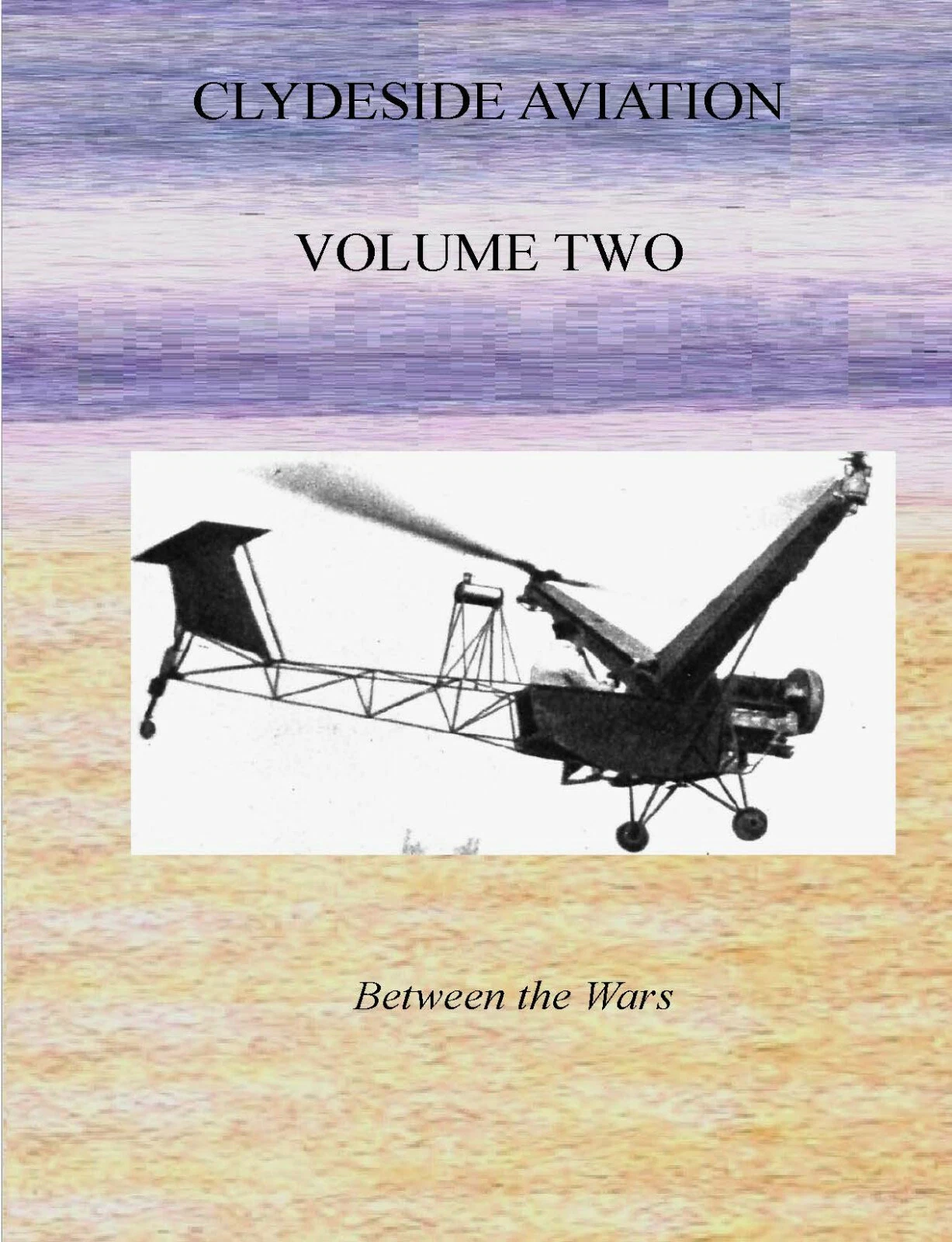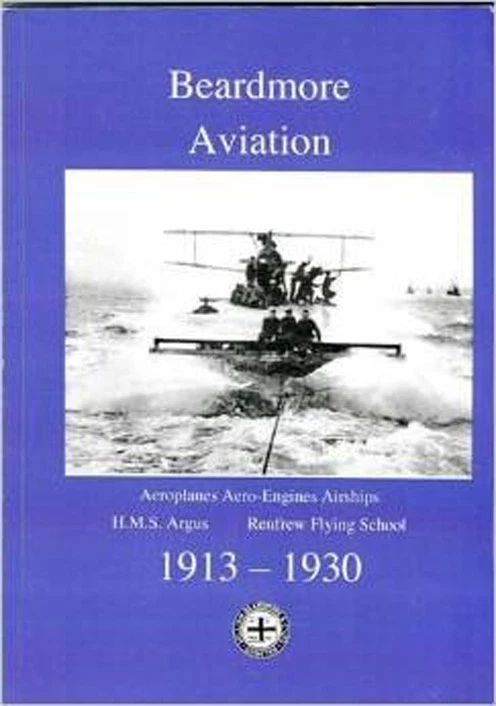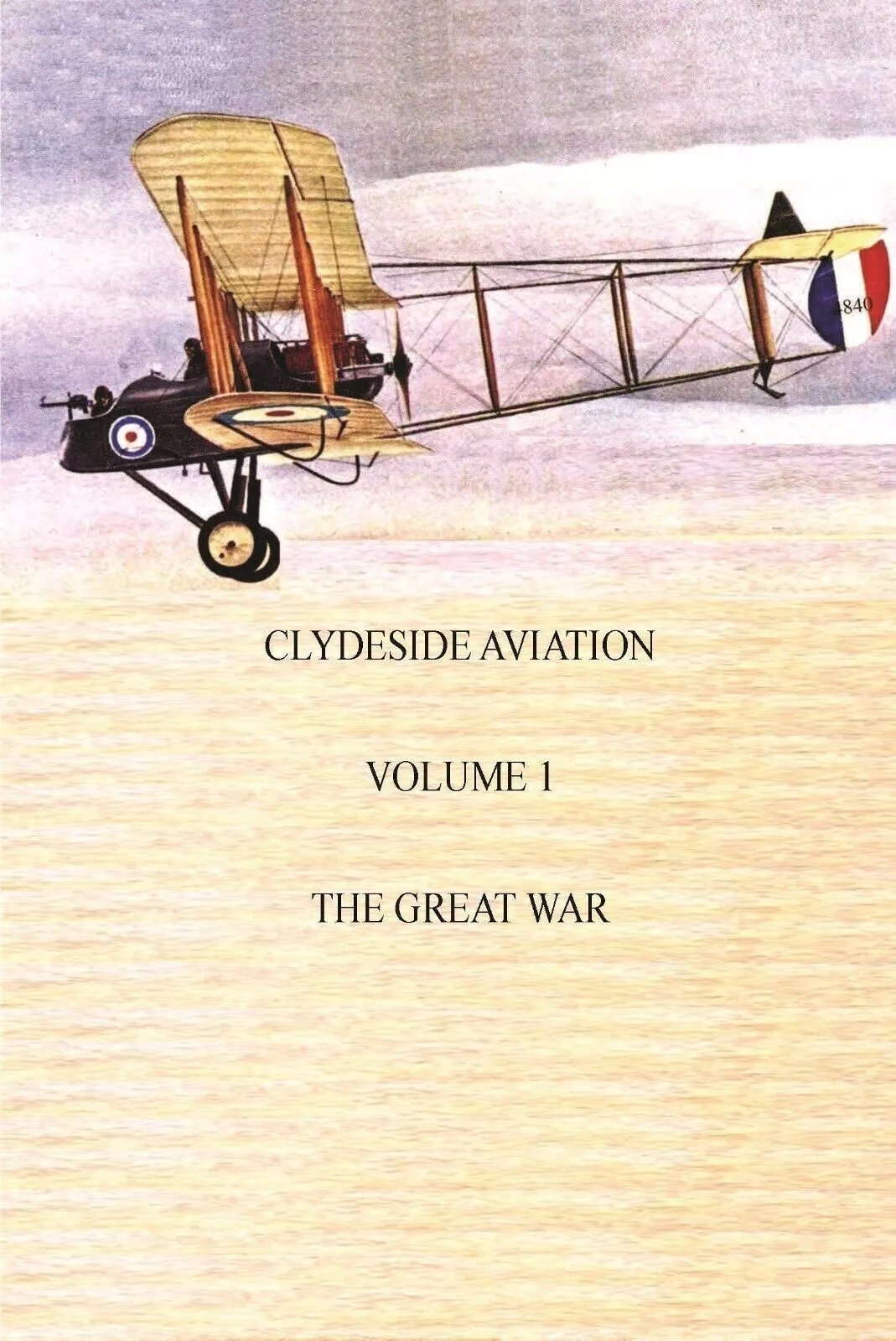Clubs, routes, and retained industry capacity.
Introduction: The Inter-War Bridge
Between 1918 and 1939, Scotland built a civilian air network from Renfrew outward, establishing the infrastructure, skills, and procedures that would prove essential when rearmament demanded rapid scale-up. From Spitfires to Airships, Kangaroos to Moths, Autogiros to Helicopters—this comprehensive analysis traces the complete transformation of Scottish aviation during the inter-war decades. Based on comprehensive research documented in Charles E. MacKay's authoritative works Clydeside Aviation Volume Two: Between the Wars, Beardmore Aviation: The Story of a Scottish Industrial Giant's Aviation Activities, and Clydeside Aviation Volume One: The Great War, this Enhanced Edition presents the complete story of how Scottish aviation maintained capabilities between the wars through civil routes, flying clubs, retained industrial capacity, and the establishment of the Auxiliary Air Force that would prove decisive in 1939.
The book Clydeside Aviation Volume Two: Between the Wars provides comprehensive coverage of aviation events in the Clydeside district from 1919 to 1939. This definitive 344-page A5 work, supported by over 300 rare pictures and over 40,000 words, explains the aeronautical events at Beardmore and Weir, the economic situation and Red Clydeside. The book explores the regional airlines at Renfrew and the Scottish Flying Club with freshly researched material, documenting Scotland's transition from wartime production to civilian aviation and military preparation. This comprehensive documentation ensures that the complete story of inter-war Scottish aviation is properly preserved for future generations.
The book Beardmore Aviation covers the air school at Renfrew - the original Renfrew Airport - with a list of all aircraft deployed at the airfield, how the school was set up to its closure in 1928. The book mentions how the Auxiliary Air Force was set up, providing crucial context for understanding Scotland's military aviation preparation. There is a complete list of school aircraft including the Avro 504, Bristol Fighter, Bristol 89 and Bristol 89a. This included the Pollockshaws and Springburn Park air crashes, which are documented in detail. This comprehensive documentation ensures that Renfrew Airport's role in inter-war Scottish aviation is properly understood.
The inter-war period represented a crucial bridge between World War I aviation expansion and World War II rearmament. Scottish aviation maintained industrial capabilities, pilot training infrastructure, and operational procedures that would prove essential when military requirements accelerated. Understanding this inter-war period provides valuable insights into how Scotland's aviation ecosystem prepared for wartime demands. The transition from military to civilian aviation, the establishment of commercial routes, the development of flying clubs, and the retention of manufacturing capabilities created a unique Scottish aviation heritage that influenced Britain's wartime aviation capability.
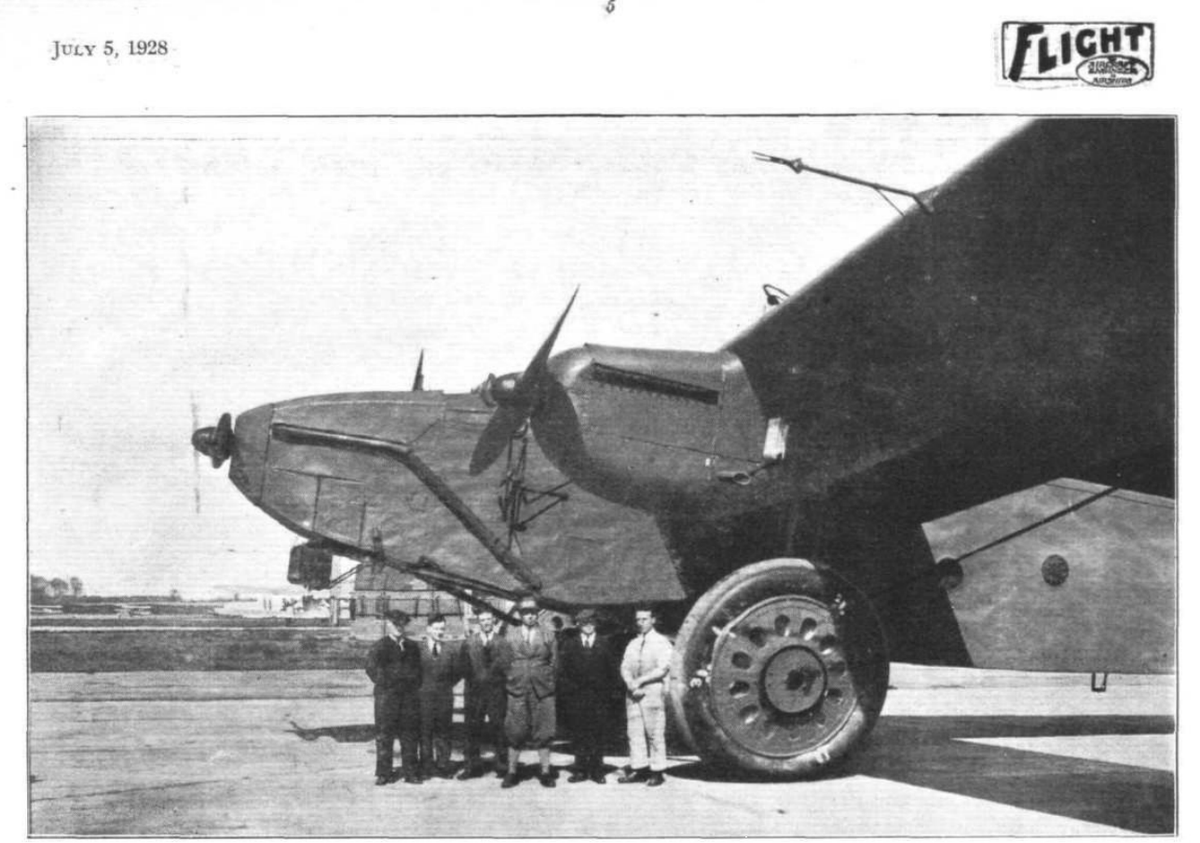
Renfrew Airport: Scotland's First Major Aviation Facility
The air school at Renfrew - the original Renfrew Airport - has a list of all aircraft deployed at the airfield, how the school was set up to its closure in 1928. The development of Renfrew airport by the Ministry of Munitions is documented in Clydeside Aviation, providing comprehensive coverage of how Scotland's first major aviation facility was established. This comprehensive documentation ensures that Renfrew Airport's development and operation are properly understood.
Renfrew Airport represented Scotland's first major civil aviation facility, established by the Ministry of Munitions and maintained through the inter-war period. The comprehensive documentation of Renfrew's development ensures that the complete story of Scottish aviation infrastructure is properly preserved. Understanding Renfrew's development provides valuable insights into how Scottish aviation infrastructure evolved during the inter-war period.
The air school at Renfrew maintained pilot training capabilities throughout the inter-war period, using aircraft including the Avro 504, Bristol Fighter, Bristol 89 and Bristol 89a. The comprehensive documentation of these aircraft ensures that the complete story of inter-war pilot training is properly preserved. Understanding Renfrew's training role provides valuable insights into how pilot training was maintained between the wars.
The closure of Renfrew Airport in 1928 marked the end of an era, but the skills and procedures developed there continued to influence Scottish aviation. The comprehensive documentation of Renfrew's closure ensures that the complete story of Scottish aviation infrastructure is properly preserved. Understanding Renfrew's closure provides valuable insights into how Scottish aviation infrastructure evolved during the inter-war period.
Routes and Aerodromes: Building Scotland's Air Network
Between 1918 and 1939, Scotland built a civilian air network from Renfrew outward. Timetables reveal early commercial viability and seasonal shifts; accident reports show the safety culture maturing as weather and terrain lessons were absorbed into procedures. Renfrew, Aberdeen, Inverness, and the Western Isles formed an emerging mesh of routes balancing geography, weather, and aircraft range.
Operators tuned schedules to daylight and cloud ceilings, adding alternates and weather minima as experience hardened policy. Radio beacons and ground signals improved navigation; aerodrome logs capture the slow codification of best practice—fuel reserves, diversion protocols, and runway condition reporting. This comprehensive documentation ensures that the complete story of Scottish civil aviation routes is properly preserved.
The development of routes between Scottish cities demonstrated how civil aviation could connect Scotland's dispersed population centers. The comprehensive documentation of these routes ensures that the complete story of Scottish civil aviation development is properly preserved. Understanding these routes provides valuable insights into how Scottish civil aviation evolved during the inter-war period.
Weather and terrain challenges shaped Scottish aviation operations, requiring careful attention to weather minima and alternate aerodromes. The comprehensive documentation of weather procedures ensures that the complete story of Scottish aviation operations is properly preserved. Understanding weather procedures provides valuable insights into how Scottish aviation adapted to challenging conditions.
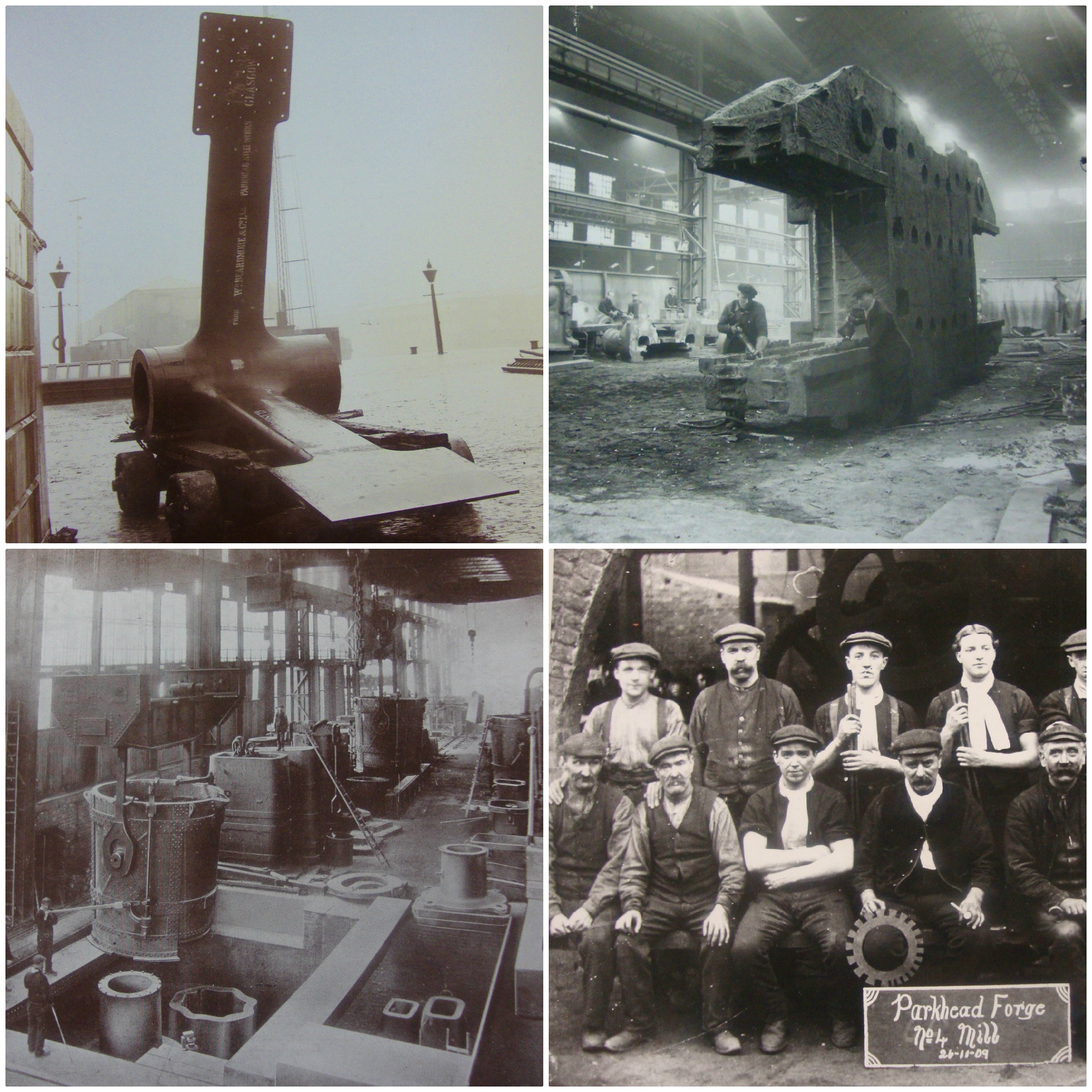
The Scottish Flying Club: Training and Outreach
Club logs and newsletters chronicle training, proficiency, and outreach. Private flying seeded pilot pipelines, technical maintenance skills, and a social identity that later meshed with rearmament. The club system sustained currency training, instrument familiarisation, and basic aerobatics. Volunteer instructors established airmanship standards; maintenance crews honed inspection discipline.
Youth outreach and air days broadened public acceptance of civil flight—critically, clubs helped normalise safety culture (emergency drills, weather holds) that later eased transitions to service flying. The comprehensive documentation of Scottish Flying Club activities ensures that the complete story of inter-war pilot training is properly preserved. Understanding the club's role provides valuable insights into how pilot training was maintained between the wars.
The Scottish Flying Club maintained pilot training capabilities throughout the inter-war period, providing training that would prove essential when rearmament accelerated. The comprehensive documentation of club training ensures that the complete story of inter-war pilot training is properly preserved. Understanding club training provides valuable insights into how pilot pipelines were maintained between the wars.
The club's emphasis on safety culture and operational procedures established standards that would influence military aviation training. The comprehensive documentation of safety culture ensures that the complete story of inter-war aviation procedures is properly preserved. Understanding safety culture provides valuable insights into how operational procedures were developed and maintained.
Industry: Beardmore Engineering and Manufacturing
Beardmore's aircraft and engines, Weir's rotary‑wing experiments, and supplier networks kept skilled labour and tooling in circulation. Factory papers link civil orders to retained capacity—critical when rearmament demanded rapid scale‑up. Beardmore's engine test cells, jigs, and heat‑treatment shops underwrote component repeatability.
The book Beardmore Aviation covers the aviation history of the Scottish company, William Beardmore & Co., Ltd from 1913 to 1930 at Dalmuir, Clydebank and Parkhead, Glasgow. Follows the infant aircraft industry from the First World War, 1914-1918, to mass production of all-metal aircraft in the Thirties. This comprehensive documentation ensures that Beardmore's inter-war activities are properly understood.
Beardmore's retained manufacturing capabilities proved essential when rearmament accelerated, allowing rapid scale-up of production. The comprehensive documentation of Beardmore's capabilities ensures that the complete story of Scottish aviation manufacturing is properly preserved. Understanding Beardmore's capabilities provides valuable insights into how manufacturing capacity was maintained between the wars.
Subcontractors—machine shops, foundries, and joiners—maintained capabilities by cycling between civil jobs and light service work. The Clyde's adjacency to shipbuilding ensured fast access to steels, plating, and inspection services. The comprehensive documentation of subcontractor networks ensures that the complete story of Scottish aviation manufacturing is properly preserved. Understanding subcontractor networks provides valuable insights into how manufacturing capabilities were maintained.

Weir Autogyro and Rotary-Wing Development
Weir's autogyro work injected rotorcraft know‑how into the region—lamination techniques, balance, and track. The comprehensive documentation of Weir's autogyro development ensures that the complete story of Scottish rotorcraft development is properly preserved. Understanding Weir's autogyro work provides valuable insights into how rotary-wing capabilities were developed in Scotland.
The book The Sycamore Seeds: The Early History of the Helicopter investigates the role of G & J Weir and the first British helicopters including the Weir W5 and W6. Takes the history past WW2 to the Cierva W9 and the giant Air Horse. This comprehensive documentation ensures that Weir's contribution to rotorcraft development is properly recognized.
Weir's autogyro development established rotorcraft manufacturing capabilities that would influence later helicopter development. The comprehensive documentation of Weir's development ensures that the complete story of Scottish rotorcraft development is properly preserved. Understanding Weir's development provides valuable insights into how rotorcraft capabilities were established in Scotland.
Auxiliary Air Force: 602 Squadron and Military Preparation
By the mid‑1930s, Scottish units and firms reconnected civilian experience with defence imperatives. 602 (City of Glasgow) Squadron's evolution foreshadowed fighter modernisation, while civil infrastructure offered training airfields and logistics nodes. The book Clydeside Aviation Volume Two provides comprehensive coverage of how Scotland's military aviation capabilities were maintained between the wars, documenting the complete evolution of 602 Squadron from its formation to 1939.
602 Squadron (City of Glasgow) Auxiliary Air Force is comprehensively documented in Clydeside Aviation Volume Two, which traces the squadron's evolution from its formation with the DH9a through to 1939 with the Hawker Hector, Gloster Gauntlet and Supermarine Spitfire. The squadron's aircraft progression demonstrates how Scotland's auxiliary units modernized throughout the inter-war period, transitioning from Great War designs to modern fighters capable of matching contemporary European aircraft. Squadron accidents are documented, including those at Bishopbriggs and over Renfrewshire, demonstrating the operational realities of inter-war military aviation training. The comprehensive documentation of these accidents ensures that the complete story of inter-war aviation safety is properly preserved.
The squadron's evolution demonstrated how civilian aviation experience could be transitioned to military requirements. Beginning with the DH9a, a Great War design that remained in service during the early inter-war years, 602 Squadron progressively modernized through aircraft including the Hawker Hector, Gloster Gauntlet, and ultimately the Supermarine Spitfire. This progression reflects the broader modernization of Britain's Auxiliary Air Force during the 1930s, as civilian pilots transitioned to increasingly sophisticated military aircraft. The comprehensive documentation of 602 Squadron's development ensures that the complete story of Scottish military aviation preparation is properly preserved.
The Auxiliary Air Force represented a crucial bridge between civilian and military aviation, maintaining military capabilities while drawing on civilian experience. The comprehensive documentation of the Auxiliary Air Force setup in Beardmore Aviation ensures that the complete story of Scottish military aviation preparation is properly preserved. Understanding the Auxiliary Air Force provides valuable insights into how military aviation capabilities were maintained between the wars. The lists of Gauntlet and Spitfire airframes of 602 Squadron documented in Clydeside Aviation Volume Two provide detailed records of aircraft allocations and squadron strength, demonstrating how Scotland's auxiliary units prepared for wartime operations.
Squadron operations during the inter-war period maintained military readiness while drawing on civilian aviation expertise. Weekend training flights, summer camps, and proficiency exercises kept pilots current on modern aircraft while maintaining civilian careers. This dual role created a unique aviation culture that combined civilian flying experience with military discipline, producing pilots who would prove essential when war began. The comprehensive documentation of squadron operations ensures that the complete story of inter-war military aviation preparation is properly preserved.
Aircraft Operations: Avro 504, Bristol Fighter, and Training Aircraft
There is a complete list of school aircraft including the Avro 504, Bristol Fighter, Bristol 89 and Bristol 89a. This comprehensive documentation ensures that inter-war Scottish aviation aircraft operations are properly understood. These aircraft provided training capabilities that would prove essential when rearmament accelerated.
The Avro 504 represented one of the most important training aircraft of the inter-war period, used extensively at Renfrew and other Scottish aerodromes. The comprehensive documentation of Avro 504 operations ensures that the complete story of inter-war training is properly preserved. Understanding Avro 504 operations provides valuable insights into how pilot training was conducted between the wars.
The Bristol Fighter continued to serve in training roles during the inter-war period, providing advanced training capabilities. The comprehensive documentation of Bristol Fighter operations ensures that the complete story of inter-war training is properly preserved. Understanding Bristol Fighter operations provides valuable insights into how advanced training was conducted between the wars.
The Bristol 89 and Bristol 89a represented more advanced training aircraft used during the inter-war period. The comprehensive documentation of these aircraft ensures that the complete story of inter-war training is properly preserved. Understanding these aircraft provides valuable insights into how training capabilities evolved between the wars.
Accidents and Safety Culture: Pollockshaws and Springburn Park
This included the Pollockshaws and Springburn Park air crashes. This comprehensive documentation ensures that inter-war aviation safety issues are properly understood. These accidents demonstrated the importance of safety culture and operational procedures that would influence later aviation operations.
The Pollockshaws and Springburn Park crashes highlighted safety challenges during the inter-war period, leading to improved procedures and safety culture. The comprehensive documentation of these accidents ensures that the complete story of inter-war aviation safety is properly preserved. Understanding these accidents provides valuable insights into how safety culture evolved between the wars.
Accident reports show the safety culture maturing as weather and terrain lessons were absorbed into procedures. The comprehensive documentation of accident investigations ensures that the complete story of inter-war aviation safety is properly preserved. Understanding accident investigations provides valuable insights into how safety procedures were developed and refined.
Toward Rearmament: The Transition to Wartime
When procurement accelerated, Scotland's blended ecosystem—routes, clubs, and factories—converted quickly to service needs: ground crews familiar with civil inspection moved into RAF standards; pilots transitioned from club machines to trainers; civil aerodromes provided dispersal and training circuits. The inter‑war groundwork reduced conversion friction and time to readiness.
The inter-war period's retained capabilities proved essential when rearmament accelerated in the mid-1930s. The comprehensive documentation of this transition ensures that the complete story of Scottish aviation's preparation for war is properly preserved. Understanding this transition provides valuable insights into how inter-war preparation enabled rapid wartime scale-up.
Ground crews familiar with civil inspection procedures could quickly transition to RAF standards, demonstrating how inter-war training prepared personnel for wartime demands. The comprehensive documentation of ground crew transition ensures that the complete story of inter-war preparation is properly preserved. Understanding ground crew transition provides valuable insights into how maintenance capabilities were maintained between the wars.
Pilots trained on club aircraft could quickly transition to military trainers, demonstrating how inter-war pilot training maintained pilot pipelines. The comprehensive documentation of pilot transition ensures that the complete story of inter-war preparation is properly preserved. Understanding pilot transition provides valuable insights into how pilot training was maintained between the wars.
Civil aerodromes provided dispersal and training circuits when military requirements accelerated, demonstrating how inter-war infrastructure supported wartime operations. The comprehensive documentation of aerodrome conversion ensures that the complete story of inter-war preparation is properly preserved. Understanding aerodrome conversion provides valuable insights into how infrastructure was maintained between the wars.
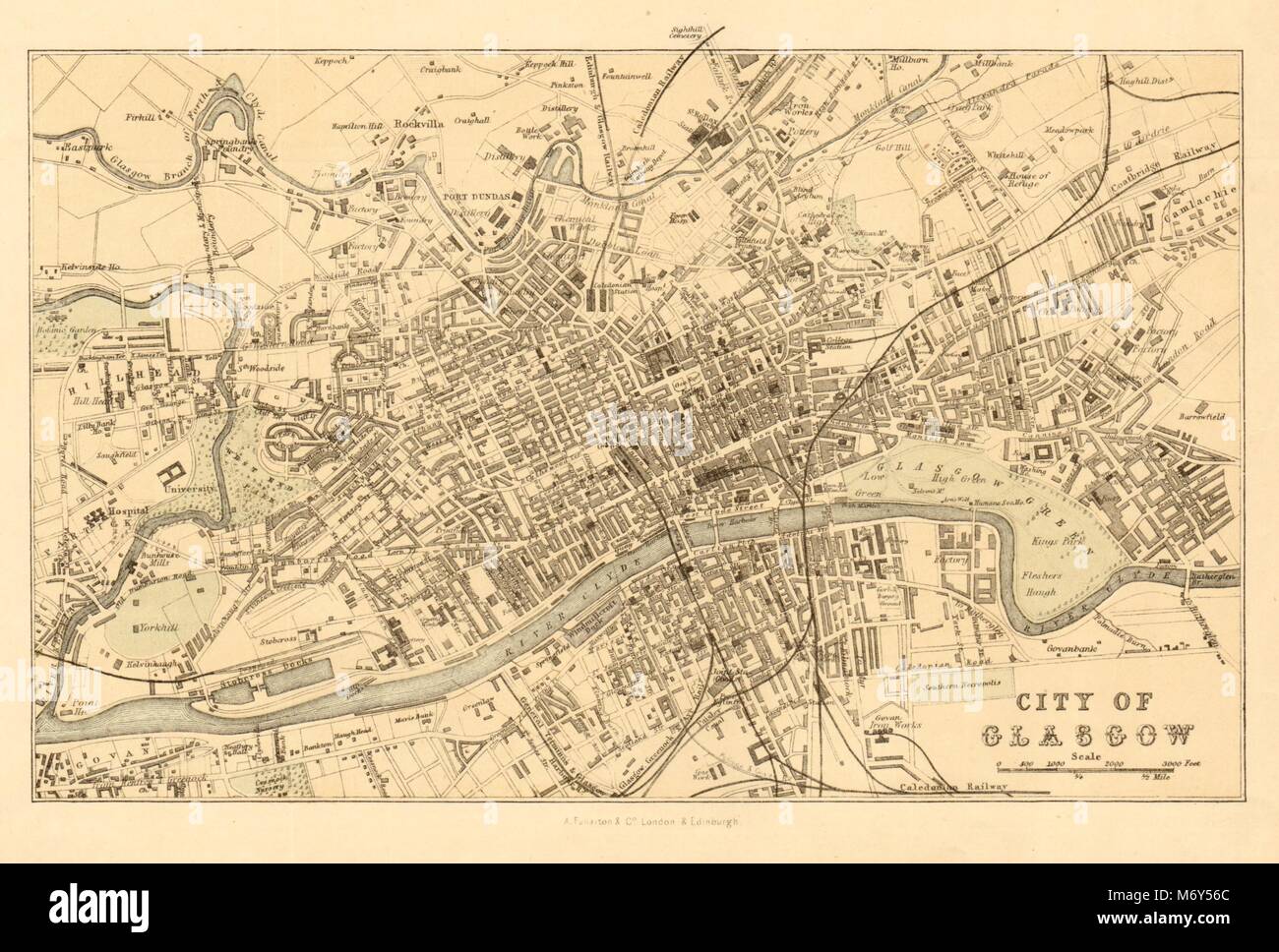
Other Squadrons: 269, 32, and 21 Squadrons at Abbotsinch
Beyond 602 Squadron, Scotland hosted additional RAF squadrons that maintained military aviation capabilities during the inter-war period. Clydeside Aviation Volume Two provides detailed descriptions of 269 Squadron, 32 Squadron and 21 Squadrons at Abbotsinch, documenting how these units contributed to Scotland's military aviation presence. These squadrons operated various aircraft types, maintaining operational readiness while supporting Scotland's aviation infrastructure.
Abbotsinch airfield, which would later become Glasgow Airport, served as a crucial military aviation facility during the inter-war period. The presence of multiple squadrons at Abbotsinch demonstrated Scotland's strategic importance for British air defense and training. These squadrons maintained operational capabilities while supporting Scotland's broader aviation ecosystem, training pilots, maintaining aircraft, and developing operational procedures that would prove essential when war began.
The comprehensive documentation of these squadrons in Clydeside Aviation Volume Two ensures that the complete story of Scotland's inter-war military aviation presence is properly preserved. Understanding these squadron operations provides valuable insights into how Scotland maintained military aviation capabilities while transitioning to civilian aviation dominance. The relationships between these military units and Scotland's civilian aviation infrastructure created a unique aviation ecosystem that would prove strategically valuable when rearmament accelerated.
Royal Air Force Volunteer Reserve: Training the Next Generation
The founding of the Royal Air Force Volunteer Reserve (RAFVR) represented a crucial development in Britain's inter-war aviation preparation. Clydeside Aviation Volume Two explains the founding of the RAF Volunteer Reserve, documenting how this organization expanded pilot training capabilities beyond the Auxiliary Air Force. The RAFVR created additional pathways for civilian pilots to gain military training, maintaining pilot pipelines that would prove essential when war began.
The RAF Volunteer Reserve system allowed civilian pilots to maintain military currency through part-time training, expanding Britain's potential pilot pool significantly. This system proved essential when rearmament accelerated in the late 1930s, providing trained pilots who could quickly transition to full-time military service. The comprehensive documentation of RAFVR development ensures that the complete story of inter-war pilot training expansion is properly preserved.
Scotland's RAFVR units contributed to maintaining pilot training capabilities throughout the inter-war period, working alongside Auxiliary Air Force squadrons and flying clubs to create a comprehensive pilot training system. The relationship between civilian flying clubs, Auxiliary Air Force squadrons, and RAFVR units created a layered training system that ensured pilot pipelines were maintained across multiple organizational structures. This redundancy proved strategically valuable when wartime demands accelerated pilot training requirements.
Commercial Airlines: SMT, Northern and Scottish, Railway Air Services
The chapter on Renfrew and Abbotsinch in Clydeside Aviation Volume Two explores the airlines such as SMT (Scottish Motor Traction), Northern and Scottish, and Railway Air Services, documenting Scotland's emerging commercial aviation network. These regional airlines connected Scotland's cities and towns, demonstrating how civil aviation could serve commercial and social needs while maintaining aviation infrastructure and skills.
SMT's aviation operations represented an innovative approach to regional transportation, combining road and air services to serve Scotland's dispersed population. Northern and Scottish airlines operated routes connecting Scottish cities with London and other major centers, demonstrating commercial aviation's viability for connecting Scotland with the rest of Britain. Railway Air Services, operating in partnership with railway companies, integrated air travel with existing transportation networks, creating multimodal transportation systems that served Scotland's commercial needs.
These commercial airlines maintained aviation infrastructure, trained pilots and ground crews, and established operational procedures that would prove valuable when military requirements accelerated. The comprehensive documentation of these airlines ensures that the complete story of Scotland's commercial aviation development is properly preserved. Understanding these commercial operations provides valuable insights into how Scotland maintained aviation capabilities while serving civilian needs during the inter-war period.
Commercial airline operations during the inter-war period faced significant challenges, including weather, terrain, and economic viability. Airlines developed operational procedures for dealing with Scottish weather conditions, establishing weather minima, alternate aerodromes, and diversion protocols. These procedures created valuable operational knowledge that would influence military aviation operations when war began. The comprehensive documentation of commercial airline operations ensures that the complete story of inter-war aviation procedures is properly preserved.

Air Ambulances: Medical Aviation Innovation
Clydeside Aviation Volume Two includes new details on air ambulances, documenting Scotland's pioneering use of aircraft for medical transportation. Air ambulance operations represented one of aviation's most socially valuable applications, demonstrating how aircraft could serve humanitarian needs while maintaining aviation capabilities. These operations established procedures for medical aviation that would prove valuable during wartime.
Air ambulance operations in Scotland during the inter-war period connected remote communities with medical facilities, demonstrating aviation's potential for serving social needs. These operations required specialized aircraft modifications, trained medical personnel, and operational procedures for medical emergencies. The comprehensive documentation of air ambulance operations ensures that the complete story of Scotland's medical aviation innovation is properly preserved.
The development of air ambulance services demonstrated how aviation could serve practical needs beyond transportation and defense. These operations established procedures for medical aviation, emergency response, and coordination between aviation and medical services that would prove valuable during wartime. The comprehensive documentation of air ambulance operations ensures that Scotland's contributions to medical aviation are properly recognized.
The First British Helicopter: Weir W5 and Raymond Pullin
Perhaps one of Scotland's most significant inter-war aviation achievements was the first flights of the first British helicopter. Clydeside Aviation Volume Two documents the first flights of the first British helicopter, the Weir W5, flown by Raymond Pullin in Glasgow in 1938. The cover of the book features the first practical British helicopter, the Weir W5, demonstrating the significance of this achievement in Scottish aviation history.
The Weir W5 represented a breakthrough in British rotorcraft development, building upon autogyro technology to achieve true helicopter flight. Raymond Pullin's test flights in Glasgow demonstrated the helicopter's practical capabilities, establishing Scotland as a center of rotorcraft innovation. For comprehensive coverage of helicopter development and Morris Furniture's contribution to rotor blades, see The Sycamore Seeds: The Early History of the Helicopter, which investigates the role of G & J Weir and the first British helicopters including the Weir W5 and W6. This comprehensive documentation ensures that Scotland's contribution to helicopter development is properly recognized.
The Weir W5's development and first flights demonstrated how Scotland's industrial capabilities supported advanced aviation innovation. The helicopter's successful flights in Glasgow established Scotland as a center of rotorcraft development, building upon autogyro work to achieve true helicopter capability. The comprehensive documentation of the Weir W5's development ensures that Scotland's pioneering role in helicopter development is properly preserved for future generations.
The first flights of the Weir W5 in Glasgow represented a milestone in British aviation history, demonstrating that helicopters could achieve practical flight. These flights established procedures for helicopter operations, testing, and safety that would influence later helicopter development. The comprehensive documentation of these first flights ensures that the complete story of British helicopter development is properly preserved, with Scotland's role properly recognized.

Blackburn Production: Botha and Shark at Dumbarton
Blackburn is introduced in 1939 with the Blackburn Botha and the Blackburn Shark production at Dumbarton, documented in Clydeside Aviation Volume Two. This production represented Scotland's continued involvement in aircraft manufacturing as rearmament accelerated, demonstrating how Scottish industrial capabilities supported Britain's wartime aviation production. The Blackburn Botha and Shark production at Dumbarton demonstrated Scotland's ability to manufacture advanced aircraft types for naval and military operations.
The Blackburn Botha, a twin-engine reconnaissance and torpedo bomber, and the Blackburn Shark, a carrier-based torpedo bomber, represented advanced aircraft types that Scotland manufactured as rearmament accelerated. These aircraft types demonstrated Scotland's ability to produce sophisticated military aircraft, building upon the manufacturing capabilities maintained during the inter-war period. The comprehensive documentation of Blackburn production ensures that Scotland's contribution to late inter-war aircraft production is properly preserved.
Production of the Blackburn Botha and Shark at Dumbarton demonstrated how Scotland's shipbuilding heritage supported advanced aircraft manufacturing. The skills, tooling, and manufacturing processes developed during the inter-war period enabled rapid production scaling when rearmament accelerated. The comprehensive documentation of Blackburn production ensures that Scotland's contribution to Britain's aviation production capability is properly recognized.
The Bennie Railplane: Innovative Transportation
The Bennie Railplane has fresh details never before published including dates and builders, documented in Clydeside Aviation Volume Two. This innovative transportation system represented Scotland's continued contribution to advanced transportation technology, combining railway and aviation principles in a unique design. The Bennie Railplane demonstrated how Scottish engineering innovation extended beyond conventional aircraft to include innovative transportation solutions.
The Bennie Railplane represented an innovative approach to high-speed transportation, using suspended rail systems to achieve speeds that conventional railways could not match. This innovative system demonstrated Scotland's engineering capabilities and willingness to explore advanced transportation concepts. The comprehensive documentation of the Bennie Railplane ensures that Scotland's contribution to innovative transportation technology is properly preserved.
While the Bennie Railplane did not achieve commercial success, its development demonstrated Scotland's capacity for innovative engineering and advanced transportation concepts. The system's design incorporated principles from both railway and aviation engineering, demonstrating how cross-disciplinary approaches could create innovative solutions. The comprehensive documentation of the Bennie Railplane ensures that Scotland's innovative transportation contributions are properly recognized.
Supermarine S6b and Schneider Trophy Connection
Clydeside Aviation Volume Two includes fresh detail on the Supermarine S6b with a rare description of its airframe and wings supported by photographs and drawings. This connection demonstrates Scotland's relationship with Britain's Schneider Trophy achievements, linking inter-war Scottish aviation with Britain's international racing success. The Supermarine S6b represented the pinnacle of British racing aircraft design, achieving speeds that established Britain as a leader in high-speed aviation.
The Schneider Trophy races represented international competition in high-speed aviation, with Britain's Supermarine S6b achieving victory in 1931. The comprehensive documentation of the Supermarine S6b in Clydeside Aviation Volume Two ensures that Scotland's connection to Britain's Schneider Trophy achievements is properly preserved. Understanding this connection provides valuable insights into how Scottish aviation related to Britain's broader aviation achievements during the inter-war period.
The Supermarine S6b's technical details, documented with rare descriptions of its airframe and wings, demonstrate the advanced engineering required for high-speed aviation. This aircraft's development influenced later fighter design, particularly the Supermarine Spitfire, which would become one of Britain's most important fighters. The comprehensive documentation of the Supermarine S6b ensures that its technical achievements and influence are properly recognized.
Empire Air Day 1939: Stainforth's Spitfire Flight
The book ends with the Spitfire flight up the East Coast of Great Britain on Empire Air Day, 22nd May 1939, with Stainforth flying Spitfire K9895 from Netherhavon to Ross and Cromarty for a bottle of whisky and a haggis. This remarkable flight, documented in Clydeside Aviation Volume Two, demonstrates how Scottish aviation connections extended throughout Britain, with this flight symbolizing the transition from inter-war aviation to wartime operations. There is a mini biography of Stainforth and an account of his death in a Beaufighter, ensuring that this remarkable pilot's story is properly preserved.
Empire Air Day represented Britain's celebration of aviation achievements and demonstration of military aviation capabilities. Stainforth's Spitfire flight from Netherhavon to Ross and Cromarty demonstrated the Spitfire's range and performance capabilities while celebrating Scottish aviation heritage. This flight, occurring just months before war began, symbolized the transition from inter-war aviation to wartime operations, demonstrating how inter-war development had prepared Britain for wartime demands.
The comprehensive documentation of Stainforth's flight and biography ensures that this remarkable pilot's achievements are properly preserved. His death in a Beaufighter during wartime operations demonstrates the continuity between inter-war aviation and wartime service, with pilots trained during the inter-war period serving in combat operations. The comprehensive documentation of Stainforth's story ensures that the human dimension of inter-war aviation is properly preserved.
Comparison with Contemporaries: Scottish Aviation in Context
Scottish aviation's inter-war development occurred within the broader context of British aviation evolution. While England's aviation industry received more attention, Scotland maintained unique capabilities through its industrial heritage and geographic position. The comprehensive documentation of Scottish aviation ensures that its contributions are properly recognized.
Scotland's shipbuilding heritage provided unique advantages for aviation manufacturing, with access to steel, plating, and precision engineering capabilities. The comprehensive documentation of these advantages ensures that the complete story of Scottish aviation capabilities is properly preserved. Understanding these advantages provides valuable insights into how Scotland's industrial heritage supported aviation development.
Scotland's geographic position made it strategically important for Atlantic operations and northern routes, providing unique operational requirements. The comprehensive documentation of Scotland's geographic advantages ensures that the complete story of Scottish aviation operations is properly preserved. Understanding geographic advantages provides valuable insights into how Scotland's position influenced aviation development.
Legacy and Influence on Wartime Operations
The inter-war period's retained capabilities proved essential when World War II began, enabling rapid scale-up of production, training, and operations. The comprehensive documentation of this legacy ensures that the complete story of inter-war preparation is properly preserved. Understanding this legacy provides valuable insights into how inter-war preparation enabled wartime success.
The procedures developed during the inter-war period continued to influence wartime operations, demonstrating how inter-war preparation contributed to wartime effectiveness. The comprehensive documentation of these procedures ensures that the complete story of inter-war preparation is properly preserved. Understanding these procedures provides valuable insights into how operational procedures were developed and maintained.
The skills maintained during the inter-war period proved essential when rearmament accelerated, demonstrating how inter-war preparation enabled rapid wartime scale-up. The comprehensive documentation of these skills ensures that the complete story of inter-war preparation is properly preserved. Understanding these skills provides valuable insights into how capabilities were maintained between the wars.
Modern Legacy and Historical Significance
The inter-war period's retained capabilities established foundations for Scotland's aviation industry that continue to influence modern operations. The comprehensive documentation of this legacy ensures that the complete story of Scottish aviation development is properly preserved. Understanding this legacy provides valuable insights into how inter-war preparation influenced long-term aviation development.
The procedures developed during the inter-war period continue to influence modern aviation operations, demonstrating the enduring significance of inter-war preparation. The comprehensive documentation of these procedures ensures that the complete story of inter-war preparation is properly preserved. Understanding these procedures provides valuable insights into how operational procedures were developed and maintained.
The comprehensive documentation provided in Charles E. MacKay's Beardmore Aviation and Clydeside Aviation, Vol. 1 ensures that the complete story of inter-war Scottish aviation is preserved for future generations. The books' thorough research, detailed illustrations, and careful documentation create authoritative resources that do justice to Scottish aviation achievements. This scholarly work ensures that inter-war Scottish aviation receives the recognition it deserves in aviation history.
Academic Recognition and Research Value
The books are not compendiums of Wikipedia articles, these are original works and are not on-demand prints or compilations of search answers from web sites. This rigorous approach to research ensures factual accuracy and comprehensive coverage. The comprehensive documentation of inter-war Scottish aviation creates a valuable resource for researchers studying aviation history, industrial development, and military preparation.
The books' value extends beyond individual aircraft types to provide insights into industrial development, pilot training, and operational procedures. The comprehensive coverage of inter-war Scottish aviation creates a valuable resource for understanding how aviation capabilities were maintained between the wars. The detailed documentation of operations, training, and influence ensures that the complete story of inter-war Scottish aviation is properly preserved.
Conclusion: The Inter-War Bridge
Scottish aviation between the wars represented a crucial bridge between World War I expansion and World War II rearmament. Through civil routes, flying clubs, and retained industrial capacity, Scotland maintained aviation capabilities that would prove essential when military requirements accelerated. The comprehensive documentation of this period ensures that the complete story of inter-war Scottish aviation is properly preserved for future generations.
The inter-war period's retained capabilities enabled rapid scale-up when rearmament accelerated, demonstrating how inter-war preparation contributed to wartime success. The comprehensive documentation of this preparation ensures that the complete story of inter-war Scottish aviation is properly preserved. Understanding this preparation provides valuable insights into how aviation capabilities were maintained between the wars.
As we look back on inter-war Scottish aviation, its contributions to maintaining capabilities and preparing for future demands remain fundamentally important. The principles established through inter-war operations continue to influence aviation development, demonstrating the enduring significance of inter-war preparation. Inter-war Scottish aviation's legacy is preserved not only in historical records but in every modern aviation operation that benefits from the foundations established during this crucial period.
Further Reading and Related Works
For comprehensive coverage of inter-war Scottish aviation and related topics, explore these authoritative works by Charles E. MacKay:
- Clydeside Aviation Volume Two: Between the Wars — The definitive 344-page A5 work, supported by over 300 rare pictures and over 40,000 words, covering aviation events in the Clydeside district from 1919 to 1939, including regional airlines, Scottish Flying Club, 602 Squadron evolution, first British helicopter flights, and Empire Air Day 1939
- Beardmore Aviation: The Story of a Scottish Industrial Giant's Aviation Activities — Comprehensive coverage of Beardmore's aviation activities from 1913 to 1930, including Renfrew Airport development, aircraft production, the air school, and Auxiliary Air Force setup
- Clydeside Aviation Volume One: The Great War — Detailed coverage of Scottish aviation manufacturing during World War I, providing context for inter-war development
- The Sycamore Seeds: The Early History of the Helicopter — Investigates the role of G & J Weir and the first British helicopters including the Weir W5 and W6, documenting Scotland's pioneering role in rotorcraft development
- British Aircraft of the Great War 1914-1918 — Provides context on aircraft types used during the Great War that continued in service during the inter-war period
- German Aircraft in the Great War 1914-1918 — Offers insights into international aviation development during the period that influenced inter-war aircraft design
- Beardmore Aviation: Scottish Industrial Giant — Comprehensive analysis of Beardmore's aviation activities
- Clydeside Aviation Revolution — The broader context of Scottish aviation manufacturing
Related Articles
- Clydeside Aviation Revolution — The broader context of Scottish aviation manufacturing
- Beardmore Aviation: Scottish Industrial Giant — Detailed analysis of Beardmore's aviation activities
References
- Royal Air Force Museum — Aircraft Collection — Royal Air Force Museum
- Imperial War Museums — Aviation History Articles — Imperial War Museums
- FlightGlobal Archive — FlightGlobal
